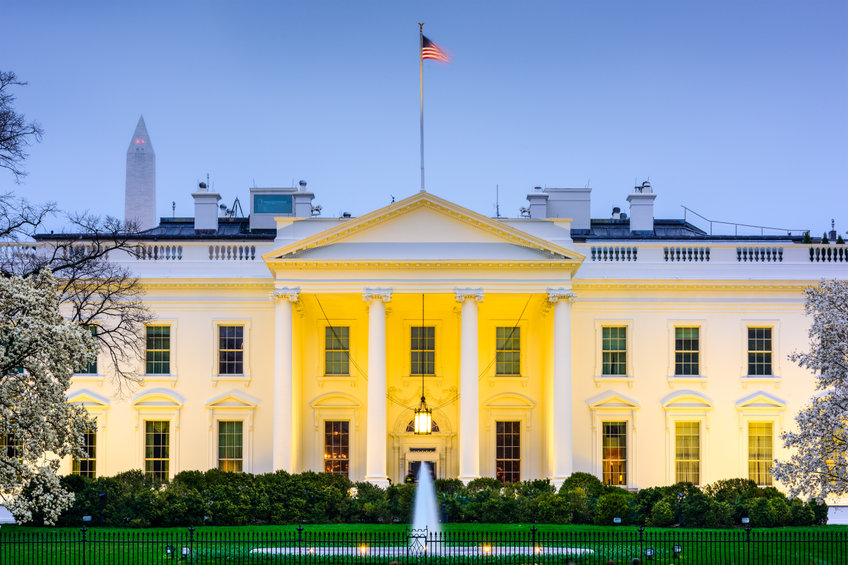On November 15-16, 2021, the White House held the first White House Tribal Nations Summit in five years. During the summit, the White House and Biden Administration officials announced a variety of action items and deliverables for Indian Country, including:
- Secretary’s Tribal Advisory Committee
- Tribal Homelands Joint Secretarial Order
- Tribal Treaty Rights Memorandum of Understanding
- Sacred Sites Memorandum of Understanding
- Native Languages Memorandum of Agreement
- Greater Chaco Landscape Mineral Withdrawal
- Indigenous Knowledge Statement and Establishment of Interagency Working Group on Indigenous Traditional Ecological Knowledge
Many of these action items will provide new and expanded opportunities for tribes to work with the Administration and gain consideration of lands, waters and resources. The article below provides brief summaries and links to final documents.
Secretary’s Tribal Advisory Committee. Secretary Deb Haaland announced the creation of the Department of the Interior’s first-ever Secretary’s Tribal Advisory Committee (STAC) and will be seeking nominations from tribal leaders in each Bureau of Indian Affairs Region.The STAC will facilitate intergovernmental discussions as a forum for open dialogue between high-level Interior leadership and bureau officials with elected tribal representatives.
Tribal Homelands Joint Secretarial Order. The Departments of Interior and Agriculture launched a “Tribal Homelands Initiative” through a joint Secretarial Order. The order commits the departments to identify opportunities for Tribes to manage federal lands, water, and wildlife habitat, consolidate tribal homelands, co-stewardship agreements of federal managed lands, and issue a report within one year of those tribal opportunities.
Tribal Treaty Rights Memorandum of Understanding. Seventeen agencies and White House advisory councils executed a Memorandum of Understanding (MOU) for the protection of Treaty Rights and Reserved Rights. The Treaty Rights MOU commits these agencies to consultation and coordination with federally recognized tribes in the development and implementation of federal actions that may affect treaty rights. This includes creating a federal database of all treaties between Tribes and the United States to enhance the integration of treaty and reserved rights in regulatory decision making, agency decision making, and strengthening consultation policies.
Sacred Sites Memorandum of Understanding. The Departments of Interior, Agriculture, Energy, and Transportation, as well as the Environmental Protection Agency, the Advisory Council on Historic Preservation, the Council on Environmental Quality, and the Tennessee Valley Authority entered into a Memorandum of Understanding (MOU) on protecting Tribal sacred sites. The MOU identifies opportunities for considering tribal sacred sites early in the federal decision-making process, adds a commitment to incorporate indigenous knowledge when assessing impacts of federal actions on sacred sites, and provides clear direction on developing best practices for collaborative stewardship and co-management when working with tribal nations.
Native Languages Memorandum of Agreement. The Departments of Education, Health and Human Services, Interior, and other federal agencies entered a Memorandum of Agreement (MOA) to promote the protection of Native languages through the establishment of the Native Language Working Group. The MOA promotes collaboration on programming, resource development, and policy related to Native languages.
Indigenous Knowledge Statement and Establishment of Interagency Working Group on Indigenous Traditional Ecological Knowledge. The Administration issued a memorandum recognizing Indigenous Traditional Ecological Knowledge as important to the United States’ scientific, technical, social, and economic advancements. In consultation with Tribes, the Administration will develop a guidance document for federal agencies on how the collection and application of such knowledge can mutually benefit Indian tribes and federal agencies in analyzing and informed decision-making across the federal government. An Interagency Working Group on Indigenous Traditional Ecological Knowledge will gather input from Tribes and Native communities and prepare the guidance document for a planned release in 2022.
Greater Chaco Landscape Mineral Withdrawal. President Biden announced that the Department of the Interior will consider a 20-year withdrawal of federal lands within a 10-mile radius around Chaco Culture National Historical Park, protecting the area from new federal oil and gas leasing and development. To support the area’s conservation, the State of New Mexico Land Office also implemented a moratorium on new state mineral leases within a 10-mile radius of Chaco Culture National Historical Park.
Patterson Earnhart Real Bird & Wilson LLP works with the White House, Members of Congress and federal officials to advance the interests of its clients. To learn more about how we can assist your tribe in Washington D.C., contact attorney Rollie Wilson in our D.C. office at (202) 340-8232.

